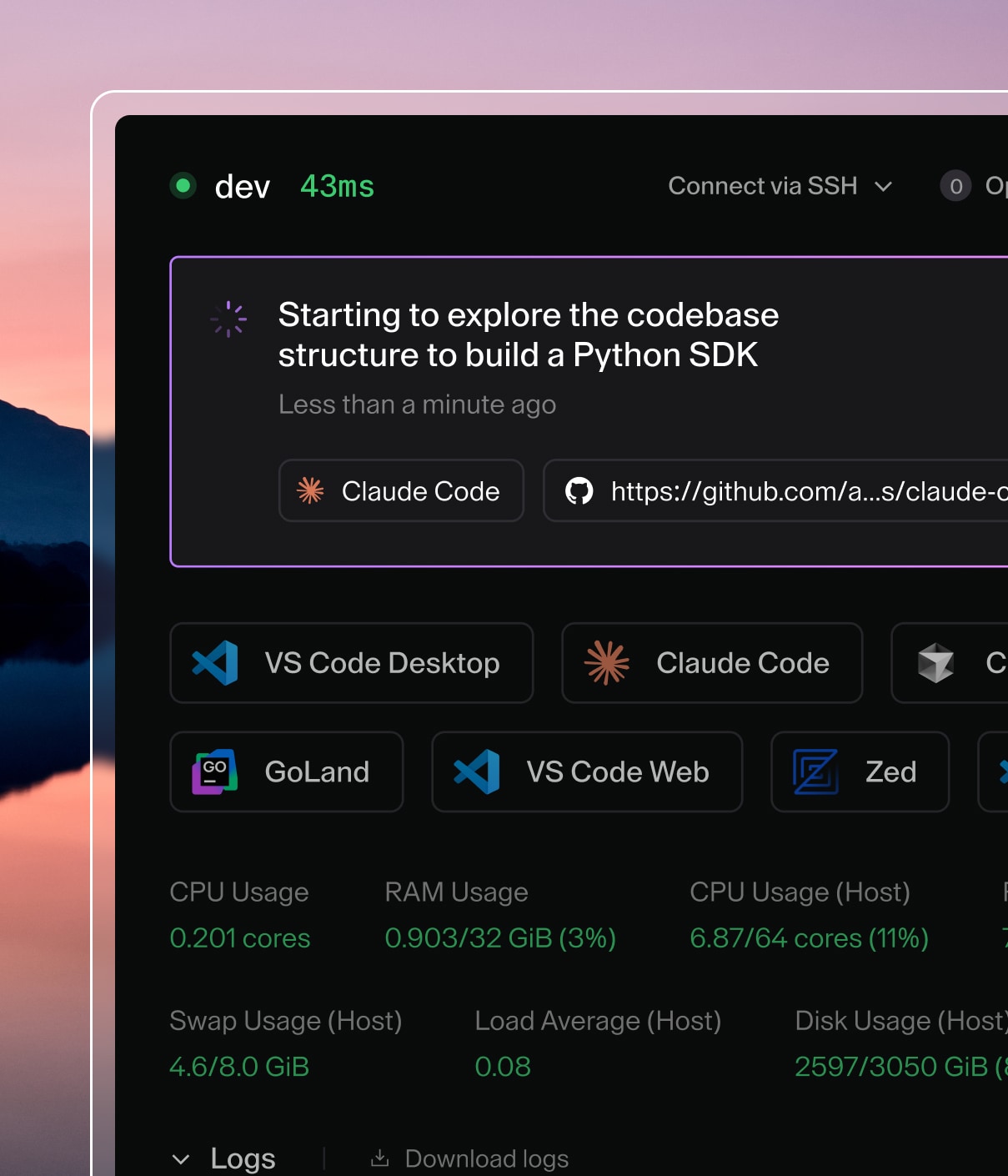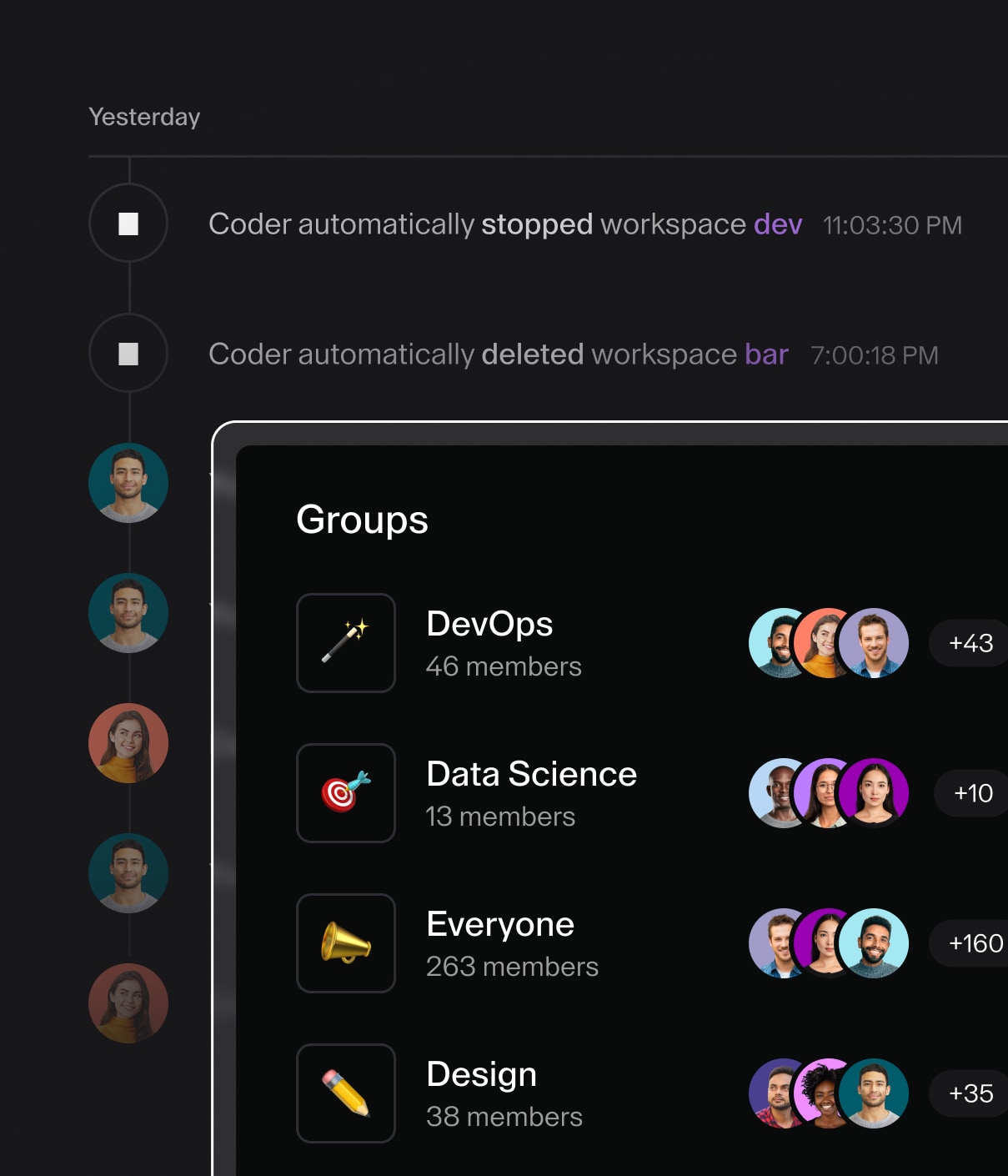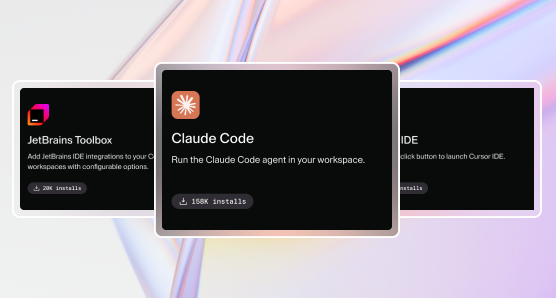Red Hat OpenShift
This deployment guide shows you how to customize your OpenShift Container Platform cluster to deploy Coder.
The OpenShift Container Platform includes security features, notably the restricted Security Context Constraint (SCC), that can interfere with Coder. This guide describes the customizations to the OpenShift cluster and Coder that ensure an optimal user experience.
Please note that OpenShift doesn't support the use of CVMs
Prerequisites
- An OpenShift cluster with a project (Kubernetes namespace) for Coder
- OpenShift command-line tools (
ocandkubectl) installed
Step 1: Modify pod and container security contexts
OpenShift's SCC feature enforces the settings with which applications must run.
The default SCC setting, restricted, requires applications to run as a user
within a project-specific range (MustRunAsRange) and does not allow apps to
define a seccomp profile.
You can view the restrictions using oc describe scc restricted:
$ oc describe scc restricted
Name: restricted
Priority: <none>
Access:
Users: <none>
Groups: system:authenticated
Settings:
Allow Privileged: false
Allow Privilege Escalation: true
Default Add Capabilities: <none>
Required Drop Capabilities: KILL,MKNOD,SETUID,SETGID
Allowed Capabilities: <none>
Allowed Seccomp Profiles: <none>
Allowed Volume Types: configMap,downwardAPI,emptyDir,persistentVolumeClaim,projected,secret
Allowed Flexvolumes: <all>
Allowed Unsafe Sysctls: <none>
Forbidden Sysctls: <none>
Allow Host Network: false
Allow Host Ports: false
Allow Host PID: false
Allow Host IPC: false
Read Only Root Filesystem: false
Run As User Strategy: MustRunAsRange
UID: <none>
UID Range Min: <none>
UID Range Max: <none>
SELinux Context Strategy: MustRunAs
User: <none>
Role: <none>
Type: <none>
Level: <none>
FSGroup Strategy: MustRunAs
Ranges: <none>
Supplemental Groups Strategy: RunAsAny
Ranges: <none>
You can override the default settings by defining the following in your Helm chart:
coderd:
podSecurityContext:
runAsUser: null
seccompProfile: null
securityContext:
seccompProfile: null
At this point, you need to get your Coder workspaces running with the appropriate service account/user. There are two options available to you:
- Adding the environment's service account to
anyuidornonroot - Building images compatible with OpenShift
Option 1: Add the environment's service account to anyuid or nonroot
Coder's default base images for workspaces, such as enterprise-base, run as
the coder user (UID 1000). However, OpenShift doesn't allow this, since
service accounts are required by the restricted Security Context Constraint
(SCC) to run with a project-specific UID.
To work around this, we we recommend adding this service account to the anyuid
or nonroot SCC since Coder creates workspaces in pods with the service account
environments:
$ oc adm policy add-scc-to-user nonroot -z environments
clusterrole.rbac.authorization.k8s.io/system:openshift:scc:nonroot added: "environments"
$ oc adm policy who-can use scc nonroot
resourceaccessreviewresponse.authorization.openshift.io/<unknown>
Namespace: coder
Verb: use
Resource: securitycontextconstraints.security.openshift.io
Users: system:admin
system:serviceaccount:coder:environments
Note: Do not set any
service_account_annotationsvalues in Workspace Providers, as it will cause Coder to create a workspace-specific service account in place of the defaultenvironmentsservice account.
Option 2: Build images compatible with OpenShift
To run Coder workspaces without modifying Security Context Constraints (SCC), you can modify the user and permissions in the base images. First, determine the UID range for the project using:
$ oc describe project coderName: coder
Created: 10 days ago
Labels: <none>
Annotations: openshift.io/description=
openshift.io/display-name=
openshift.io/requester=kube:admin
openshift.io/sa.scc.mcs=s0:c26,c10
openshift.io/sa.scc.supplemental-groups=1000670000/10000
openshift.io/sa.scc.uid-range=1000670000/10000
Display Name: <none>
Description: <none>
Status: Active
Node Selector: <none>
Quota: <none>
Resource limits: <none>
Next, create a BuildConfig that outputs an image with a UID in the given range
(in this case, sa.scc.uid-range begins with 1000670000):
kind: BuildConfig
apiVersion: build.openshift.io/v1
metadata:
name: example
namespace: coder
spec:
triggers:
- type: ConfigChange
runPolicy: Serial
source:
type: Dockerfile
dockerfile: |
FROM docker.io/codercom/enterprise-base:ubuntu
# Switch to root
USER root
# As root:
# 1) Remove the original coder user with UID 1000
# 2) Add a coder group with an allowed UID
# 3) Add a coder user as a member of the above group
# 4) Fix ownership on the user's home directory
RUN userdel coder && \
groupadd coder -g 1000670000 && \
useradd -l -u 1000670000 coder -g 1000670000 && \
chown -R coder:coder /home/coder
# Go back to the user 'coder'
USER coder
strategy:
type: Docker
dockerStrategy:
imageOptimizationPolicy: SkipLayers
output:
to:
kind: ImageStreamTag
name: "enterprise-base:latest"
This will automatically create a Build for the image.
For the moment, it will remain in the "New" status.
Finally, create an ImageStream that references the ImageStreamTag
from the BuildConfig above:
oc create imagestream enterprise-base
The Build created from the previous step should begin automatically.
When creating workspaces, configure Coder to connect to the internal OpenShift registry and use the base image you just created.


